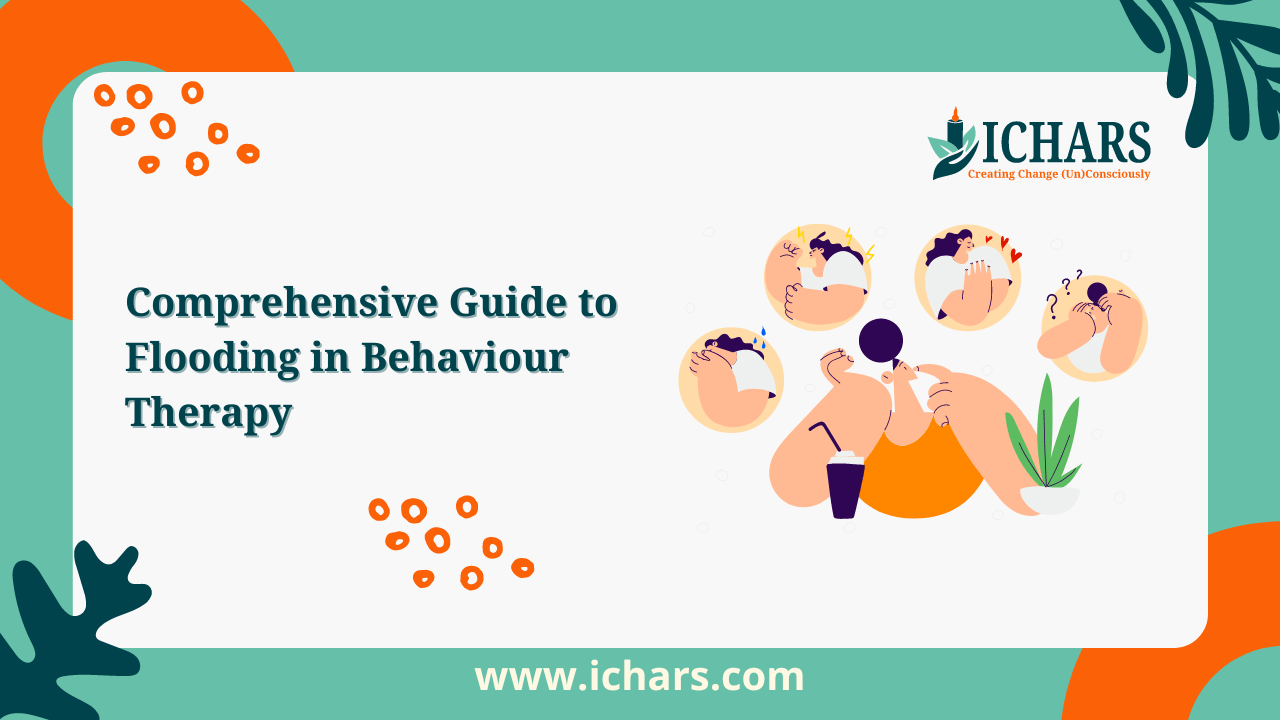In the realm of psychotherapy, techniques like flooding in behaviour therapy have been pivotal in helping individuals overcome deep-seated fears and anxieties. This article explores the principles of flooding within behaviour therapy and contrasts it with innovative approaches.
By delving into their methodologies, applications, and effectiveness, we aim to provide insights into how these therapies can transform lives.
Understanding Flooding in Behavioural Therapy
Mechanism of Flooding

Flooding, a cornerstone of behaviour therapy, operates on the principle of exposure therapy. It involves immersing individuals into their feared situations or stimuli at full intensity. Unlike gradual desensitization, which exposes individuals to feared objects or situations in a progressive manner, flooding confronts fears head-on.
This intense exposure aims to evoke the fear response fully and repeatedly until it diminishes over time. Through this process, the conditioned fear response is extinguished as the individual learns that the feared situation does not lead to the anticipated negative consequences.
Applications of Flooding in Behaviour Therapy
Specific Phobias
Flooding is particularly effective for treating specific phobias where avoidance behaviours are prominent. Common phobias addressed through flooding include fear of heights, spiders, flying, public speaking, and enclosed spaces. By confronting these fears directly in a controlled therapeutic environment, individuals can achieve rapid behavioural change and symptom reduction.
Case Example: A 35-year-old woman with a severe phobia of spiders underwent flooding therapy. During sessions, she was exposed to spiders in a controlled setting, initially from a distance and gradually closer until she could tolerate their presence without panic. Over several sessions, her fear response diminished significantly.
PTSD Treatment
Flooding is also utilized in treating post-traumatic stress disorder (PTSD), where individuals confront traumatic memories or situations that trigger distressing symptoms. By directly exposing individuals to their fears in a controlled therapeutic environment, flooding facilitates the reprocessing of traumatic memories and reduces symptoms.
Case Example: A war veteran with PTSD participated in flooding therapy to confront traumatic combat memories. With the therapist’s support, he repeatedly recalled distressing events in a safe environment, which helped diminish the intensity of his emotional responses over time.
Effectiveness and Limitations of Flooding in Behavioural Therapy
Research consistently supports the efficacy of flooding in producing significant reductions in fear and anxiety symptoms. Studies show that many individuals experience substantial improvement in their ability to cope with feared situations and stimuli following flooding therapy.
However, flooding in behaviour therapy may not be suitable for everyone due to its intensive nature and potential for emotional distress. It requires careful consideration of individual readiness and therapeutic support to ensure safe and effective outcomes.
Ethical guidelines emphasize the importance of informed consent, gradual exposure planning, and ongoing support during and after flooding sessions.
Introduction to Cognitive Hypnotic Psychotherapy (CHP)

Cognitive Hypnotic Psychotherapy (CHP) represents a contemporary integration of cognitive behavioural techniques with hypnosis. This therapeutic approach combines the cognitive restructuring of maladaptive beliefs and behaviours with the deep relaxation and heightened suggestibility achieved through hypnosis.
By accessing the subconscious mind, CHP aims to identify and reframe underlying beliefs that contribute to emotional distress and behavioural patterns. This integrative approach not only alleviates symptoms but also promotes lasting behavioural change and emotional well-being.
Techniques Used in CHP:
- When-then Statements and SWISH Pattern: To help clients restructure negative thought patterns by replacing them with positive alternatives.
- Anchoring: The association of a specific sensory stimulus (e.g., touch or sound) with a desired emotional state (e.g., calmness or confidence).
- Fast Phobia Cure: Clients are guided through visualization exercises to reframe and dissociate from phobic responses.
- Circle Therapy: Helping clients release and replace stored fears using
- Future Pacing: Imaging successful future outcomes to helps clients integrate desired changes into their future experiences and behaviours.
Contrasting Flooding in Behaviour Therapy with Cognitive Hypnotic Psychotherapy

Common Objectives and Differing Approaches
Both flooding and CHP share the primary objective of reducing anxiety, overcoming phobias, and addressing traumatic experiences.
While flooding emphasizes intensive exposure to feared stimuli to evoke and extinguish the fear response, CHP adopts a more gradual and subconscious approach through hypnosis and cognitive restructuring.
CHP focuses on identifying and altering underlying beliefs that contribute to anxiety and phobic responses, promoting adaptive coping strategies and emotional resilience.
Effectiveness and Benefits
- CHP’s Comprehensive Approach:
Integrating cognitive restructuring with hypnotic techniques offers a versatile and personalized treatment approach. This holistic method addresses both the symptomatic relief and the root causes of anxiety and phobias, promoting sustainable behavioural change and emotional well-being. - Reduced Emotional Distress:
Unlike flooding, which may provoke intense emotional reactions during exposure sessions, CHP minimizes emotional distress by creating a supportive and controlled therapeutic environment. Hypnotic induction fosters relaxation and receptivity, enhancing the client’s ability to process and integrate therapeutic interventions effectively.
Conclusion
In conclusion, while flooding remains a powerful tool in behaviour therapy for targeted fear reduction and exposure, Cognitive Hypnotic Psychotherapy offers a contemporary and integrative approach to addressing anxiety disorders and phobias.
By harnessing the synergistic effects of cognitive restructuring and hypnosis, CHP empowers individuals to achieve emotional freedom and sustainable behavioural change. Whether seeking rapid relief from specific fears or a comprehensive therapeutic journey toward holistic well-being, exploring these therapies under qualified guidance can pave the way to a brighter, fear-free future.

